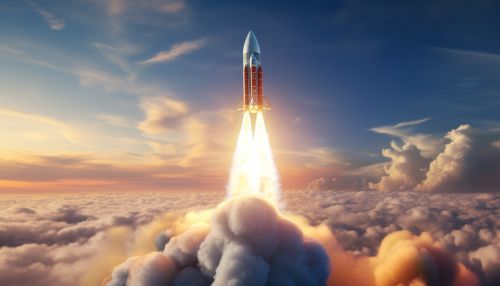Space Race
Origins of the Space Race
The Space Race was a 20th-century competition between two Cold War superpowers, the Soviet Union (USSR) and the United States (US), to achieve superior spaceflight capability. It had its origins in the ballistic missile-based nuclear arms race between the two nations following World War II. The technological superiority required for such supremacy was seen as necessary for national security, and symbolic of ideological superiority.


Early Years (1955–1961)
The Space Race began on August 2, 1955, when the Soviet Union responded to the US announcement four days earlier of intent to launch artificial satellites, by declaring they would also launch a satellite 'in the near future'. The Soviet Union beat the US to this, with the October 4, 1957 orbiting of Sputnik 1, and later beat the US to the first human in space, Yuri Gagarin, on April 12, 1961.
The Moon Landing (1961–1969)
The race peaked with the July 20, 1969 US landing of the first humans on the Moon with Apollo 11. The US achieved the first successful landing, but the USSR made the first attempt, with the unmanned Luna 15 which crashed into the Moon 17 July 1969.
Later Years and Legacy (1970–1991)
The Space Race has left a legacy of Earth communications and weather satellites, and continuing human space presence on the International Space Station. It has also sparked increases in spending on education and research and development, which led to beneficial spin-off technologies.
